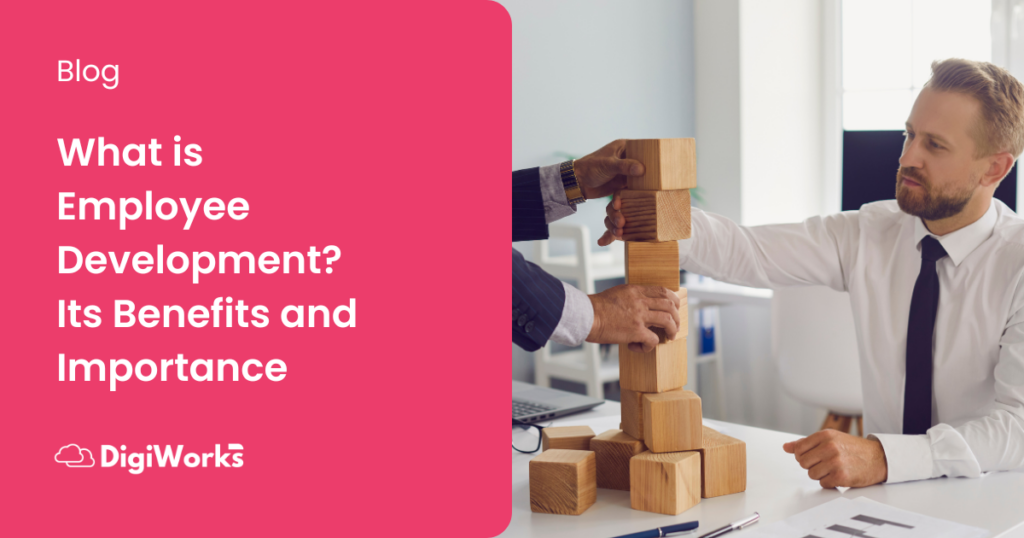Hire the Top 1% of Remote Medical Billers
- Freelance contractors
- Full-time roles
- Global teams



Trusted by 3,000+ businesses worldwide






Why Choose DigiWorks?

Faster Hiring
Get matched with top medical billers in under 72 hours. All candidates are pre-vetted for U.S. healthcare billing expertise, compliance, and communication skills.

Risk-Free Hiring
No upfront costs. Start with a free trial, and every hire comes with our replacement guarantee — so you only pay if you’re fully satisfied.

Build Real Teams
Your biller isn’t a freelancer on the side — they’re a dedicated teammate, trained in your systems, aligned with your clinic’s goals, and committed for the long term.
Service Breakdown
Claims Management
Coding Review
Follow-Up
Patient Billing
Denial Management
Follow-Up
Video Customer Testimonials

Remodelmate
Logan Phillips (Head of Operations)
Start Up
Marketplace



Remodelmate
Start Up
Marketplace

Remodelmate
Start Up
Marketplace

Remodelmate
Start Up
Marketplace
Founder Story

Rolphy
CEO (Founder)
Hi, I’m Rolphy!
- Top 2% of vetted offshore talent.
- System-driven hiring + onboarding that actually works.
- A partner who gets it because I’m in the trenches building my own companies too.
- I want to take DigiWorks from $0 to $100M ARR.
- I want to build generational wealth for my team and partners.
- I want founders to look back and say, “DigiWorks is the reason my company scaled.”
Find Out How DigiWorks Helps Businesses Hire Contractors
See a Few of Our 45k+ Pre-vetted Candidates

Jose L.
Sr. Payroll Specialist from...

Jose L.
Sr. Payroll Specialist from...
$2.5k
$2.5k

Jose L.
Sr. Payroll Specialist from...

Jose L.
Sr. Payroll Specialist from...

Jose L.
Sr. Payroll Specialist from...
Top Talent, Transparent Compensation
Virtual Medical Biller
(Entry Level)
- Bachelor’s degree or diploma in Medical Billing, Healthcare Administration, or related field
- 1–2 years of medical billing experience
- Basic knowledge of ICD-10, CPT, and HCPCS coding
- Familiarity with EHR/EMR systems like Kareo, DrChrono, or AdvancedMD
- Experience submitting claims and posting payments
- Strong attention to detail and ability to meet deadlines
Candidate Compensation
Virtual Medical Biller
(Mid-Level)
- Degree in Healthcare Administration, Medical Billing, or Accounting
- 3+ years of U.S. medical billing experience
- Skilled in full-cycle billing: charge entry → claims submission → payment posting → denial resolution
- Proficient in EHR and clearinghouse platforms like Athenahealth, PracticeSuite, or Kareo
- Strong understanding of HIPAA compliance, payer policies, and insurance guidelines
- Comfortable managing 100–200 claims per week
- Excellent problem-solving skills and ability to work independently
Candidate Compensation
Senior Virtual Medical Biller / RCM Specialist
- Advanced certification preferred: CMRS, CPB, or CPC
- 5+ years of medical billing and revenue cycle management experience
- Deep knowledge of ICD-10/CPT coding, payer contracts, Medicare/Medicaid billing, and appeals
- Proven track record of reducing claim denials and improving collection rates
- Experience leading denial analysis, reporting, and revenue optimization strategies
- Expertise with EHR/EMR systems, clearinghouses, and claims dashboards
- Ability to train junior billers and manage billing team operations
Candidate Compensation
What does a virtual medical biller do?
Why should I hire a virtual medical biller instead of an in-house biller?
At Digiworks, we prioritize customer satisfaction and high-quality execution. Our expert social media team has hands-on experience managing social media efforts across various social media platforms. The assessment of social media performance happens through analytics with metrics and listening tools for obtaining practical insights. Detailed analytics and proper post scheduling enable us to respond quickly with meaningful interactions.
Are DigiWorks’ virtual medical billers trained in U.S. healthcare billing standards?
Yes! Digiworks helps companies build customized social media approaches that fulfill their unique business requirements. To create an effective social strategy our social media experts inspect social media activity and audience engagement levels and business success metrics. Whether you need a social media content calendar, social media marketing agency support, or digital marketing communications expertise, we provide valuable insights and relevant content.
Through our social media management platform, we offer automated reports, custom reports, and seamless integration with Google Ads, Facebook Ads, Google Analytics, and Google Search Console to optimize your digital marketing efforts.
How does DigiWorks ensure HIPAA compliance and data security?
Digiworks has social media experts with years of practical experience across the social media sector through their social media management expertise. Experts at Digiworks use their knowledge to devise content posts while arranging publication dates and oversee online content distribution across multiple social channels. Their knowledge spans social media strategy, social content creation, and social media marketing campaigns. Moreover, they stay updated on the latest social media trends and utilize social media management tools to ensure optimal engagement with social media users and boost the overall social presence of our clients.
What billing software and EHR systems can DigiWorks’ billers work with?
At Digiworks, we recognize the importance of reputation management in the digital age. Our social media specialists utilize social listening features and advanced tools to monitor online activity across social media networks. We operate actively to handle customer service through our efforts to answer negative assessments and responses to deliver quicker responses and better customer satisfaction. An implemented social media strategy enables us to build our clients’ Internet identity while converting customer opinions into business expansion knowledge.
How much does it cost to hire a virtual medical biller through DigiWorks?
Absolutely! Digiworks offers comprehensive social media analytics and social media performance reports. Our service generates comprehensive social media reports which monitor audience participation rates along with social campaign performances and social remarks.
Our team monitors social media performance and schedules posts through Social Media Analytics tools and Google Analytics to achieve peak time engagement. Through these reports organizations gain specific knowledge about their social media approach which enables them to make better decisions for enhancing their social media advertising achievements and business outcomes.
Can DigiWorks provide multiple virtual medical billers if my practice grows?
Digiworks establishes a culture of open communication which enables full transparency during social media project management with our customers. Our team of social media professionals provides ongoing support by giving updates along with answer queries and manage collaboration on every project. We achieve audience engagement through smooth communication by employing sophisticated social media tools across multiple social media channels.
Our software solution monitors social media performance metrics while handling profile supervision processes that keep clients constantly updated. Whether it’s social media content creation, social media posts, or implementing a social media strategy, we work closely with our clients to achieve their business success.
How do you match us with the right virtual medical biller?
At Digiworks, we excel in handling all aspects of social media advertising. From social media marketing campaigns and digital advertising to creating actionable strategies and analyzing social media analytics, our team offers social media management and social media marketing expertise. Our social media marketing management center focuses on achieving innovative results and expands our audience reach to maintain customer satisfaction.
Every marketing campaign receives tracking through Google Ads and Facebook Ads and Google Analytics which generates detailed analytics and custom reports. We aim to improve our social media methods so clients reach their marketing targets.
How quickly can I get started with a DigiWorks virtual medical biller?
At Digiworks, we believe in offering flexibility to our clients. There are no long-term commitments required for our social media management services. We provide two options to our clients who can hire us through individual projects or subscribe to continuous social media management services.
Our dedication to serving your requirements includes both our social media marketing strategies and our customized social media campaign solutions. The social media team remains fully prepared to deliver essential advice which supports your business growth and achievement.
FAQs
Stop Losing Revenue To Denied Claims And Admin Chaos.
3,000+ Happy Customers And Counting

Dr. Amanda Lee
Founder & Primary Care Physician — Horizon Family Clinic

Jose L.
Sr. Payroll Specialist from...

Sarah Johnson
Practice Manager — Peak Orthopedics

Raj Patel
CEO — NovaCare Urgent Clinics

Raj Patel
CEO — NovaCare Urgent Clinics
Capabilities of Medical Biller
Capabilities of Medical Biller
End-to-End Revenue Cycle Management (RCM)
- Charge capture & entry
- Claims submission & follow-ups
- Payment posting & reconciliation
- Denial management & appe
- Patient invoicing & collections
Real-Time Claims Tracking & Reporting
Insurance Verification & Prior Authorizations
Specialized Billing for Diverse Medical Practices
- Primary Care & Family Medicine
- Behavioral & Mental Health
- Orthopedics & Physical Therapy
- Surgery & Anesthesia
- Radiology & Imaging
- Dental, Vision & Other Allied Health Practices
Integration With Leading EHR & Billing Systems
- Kareo
- Athenahealth
- DrChrono
- AdvancedMD
- PracticeSuite
- Epic & Cerner (for enterprise practices)
HIPAA Compliance & Data Security
Denial Management & Revenue Recovery
- Investigate root causes of denials
- Correct coding and eligibility errors
- Resubmit claims quickly
- Appeal unjust rejections
- Track patterns to prevent future issues
Patient Billing & Payment Support
Performance Optimization Through Analytics
- Clean claim rates
- Denial percentages
- Days in accounts receivable (A/R)
- Payer-specific performance
- Track patterns to prevent future issues
Scalable Medical Billing Teams
Ongoing Support, Training & Compliance Updates
What is Employee Development? Its Benefits and Importance
Jul 30, 2024 • 18 min read

Employee development is a crucial aspect of any organization’s success. A robust employee development plan not only benefits the employee but also drives growth for the organization. In today’s competitive business landscape, having a talented and skilled workforce is a key driver of success. Therefore, it is essential for companies to invest in their employees’ growth and development.
An effective career development plan includes training programs, mentoring programs, leadership training, and professional development opportunities. By providing these opportunities, employees can improve their skills, gain new skills, and attain their career goals. An engaged employee who has access to development programs is more likely to stay with the company for a longer period. This translates to longer-term employee retention and improved performance.
You’ll learn:
- What is Employee Development?
- Benefits and Importance of Employee Development
- What are the Most Effective Employee Development Methods?
- What are the Employee Development Areas?
- How Can You Turn Employee Development into an Engaged Workforce?
Ready to build your remote team?
Use the DigiWorks platform to hire, manage, and pay remote talent from all over the world.
What is Employee Development?
Employee development is a crucial aspect of any successful business. It refers to the investment made by an organization in its employees’ skills, knowledge, and abilities. The concept of employee development acknowledges that an organization’s success relies heavily on the skills and capabilities of its workforce. Therefore, employers invest in development programs to improve their employees’ abilities, increase their productivity, and enhance their job satisfaction.
These professional development plans can take many forms such as training programs, mentoring programs, leadership training, and professional development opportunities. The aim of these programs is to give employees the opportunity to learn new skills, gain experience, and prepare for more significant responsibilities. Furthermore, it helps to provide employees with support for their personal growth, which in turn leads to improved self-esteem and a positive company culture.
Employee development is not only about individuals’ growth, but it also benefits the organization as a whole. An organization that invests in employee development can create a competitive advantage by having highly skilled and motivated employees who can tackle complex challenges and contribute significantly to the company’s growth.
To be effective, an employee development program should be tailored to the employees’ specific needs and the organization’s goals. The program should be designed to address any skill gaps or deficiencies and help employees achieve their career goals. The program should also be regularly evaluated and adjusted as necessary to ensure its continued effectiveness.

Benefits and Importance of Employee Development
In today’s competitive business landscape, companies are constantly seeking ways to stay ahead of the curve. One of the most crucial components of achieving this goal is employee development. Employee development refers to the process of providing employees with the necessary training, coaching, and mentoring needed to enhance their skills, knowledge, and experiences. This process not only benefits individual employees but also leads to a host of rewards for the entire organization.
1. Performance Improvement
Performance improvement is an essential aspect of employee development. When employees are provided with the necessary tools and resources to improve their skills and competencies, they become more productive and efficient, leading to increased bottom-line results for the company.
One effective way to improve employee performance is through training programs. These programs not only teach new skills but also reinforce existing ones while keeping employees up-to-date on emerging trends and technologies. By investing in training programs, companies can help their employees develop critical knowledge and competencies that will benefit them in the long run.
One drivers of employee engagement is through the use of performance metrics. By providing employees with clear and measurable goals, it becomes easier to track their progress and identify areas where they need additional training or development. This approach not only helps to improve employee performance but also increases employee engagement as employees have a clear understanding of what is expected of them.
Effective employee development plans should also provide opportunities for personal growth and career advancement. When employees feel that there are opportunities for advancement within the company, they are more likely to remain loyal and motivated. Companies can foster a culture of growth by offering opportunities for employees to take on leadership roles, attend conferences, and participate in other professional development opportunities.
Finally, it’s essential to recognize and reward employees who have made significant contributions to the company. Rewards can come in the form of bonuses, promotions, or other recognition that acknowledges the employee’s hard work and dedication. By recognizing and rewarding high-performing employees, companies can inspire others to strive for excellence and help to create a positive and productive work environment.

2. Better handle unexpected situations
As a business owner or manager, it’s essential to be prepared for unexpected situations that might arise in the workplace. Whether it’s a sudden change in the market, a product recall, or a natural disaster, unexpected situations can be incredibly stressful and challenging to navigate. However, there are a few things that you can do to better handle unexpected situations.
The first thing to do is to have a plan in place for emergencies. This includes having specific procedures in place for dangerous weather, power outages, medical emergencies, fire, or other crises that may arise. Train your employees on what to do in these situations and have regular fire drills and other safety protocols specifically to prepare everyone.
Another important thing to consider is having a communication plan in place. In case of emergencies, you need to be able to quickly and effectively communicate with all your employees, customers, stakeholders, and others who may be impacted. Consider using multiple channels of communication, including email, phone, text, and social media, to ensure that everyone is aware of the situation and what action to take.
At the same time, effective communication also means being open, honest, and transparent about what is happening and your plans for addressing the situation. This can help build trust with your employees, customers, and stakeholders and reassure them that you are taking the situation seriously.
In addition, don’t overlook the importance of taking care of your employees’ mental and emotional well-being during unexpected situations. As a leader, you need to be aware of how your employees are feeling and support them as they navigate a challenging time. This can include offering flexible work arrangements, providing resources for mental health support, and acknowledging the stress and uncertainty that everyone is feeling.

3. Learning culture inside an organization help attract new employees and improve loyalty
In today’s fast-paced and ever-evolving economy, a company’s ability to attract and retain top talent is critical to its success. Beyond offering competitive compensation packages and attractive benefits, one of the most effective ways to attract and retain talented employees is to develop a strong learning culture within the organization.
What is a learning culture? At its core, a learning culture is an environment in which continuous learning and growth are encouraged and supported. In such a culture, employees are empowered and motivated to acquire new skills, knowledge, and competencies to benefit not only themselves but the organization as a whole.
A strong learning culture shows potential employees that personal and professional development is important to the organization. This can be a powerful recruiting tool, especially among young professionals who are looking for challenging and rewarding careers that will help them grow and advance.
Additionally, organizations with a strong learning culture tend to have higher levels of employee satisfaction, engagement, and loyalty. When employees feel supported and encouraged to learn and grow on the job, they are more likely to feel valued and invested in their roles. This, in turn, leads to higher levels of retention and reduced turnover rates.
Companies that invest in continuous development opportunities for their employees also tend to have more skilled and knowledgeable workforces. This can lead to improved productivity, performance, and innovation, as employees are better equipped to tackle new challenges and adapt to changes in the business environment.

4. Save money via retaining employees
While it may seem counterintuitive, investing in employee development can actually save a company money in the long run. One of the key benefits of a strong learning culture is increased employee retention. When companies provide their employees with opportunities to learn and grow, they are more likely to feel valued and invested in their roles. This can lead to greater job satisfaction, which in turn reduces turnover rates.
When employees leave a company, it can be expensive to replace them. Not only do companies have to spend resources on recruiting and hiring new personnel, but there are also often costs associated with onboarding and training new employees. Additionally, there is a period of adjustment during which new employees are not yet fully productive, which can hamper business operations and hurt profitability.
In contrast, retaining employees allows companies to benefit from their experience and expertise. Tenured employees have a deep understanding of company processes and policies, which can make them more efficient and effective in their roles. They are also often more engaged and motivated, as they have already invested time and effort into their careers with the company.
Furthermore, employee retention can foster a positive company culture. When employees see that their colleagues are being supported and valued, they are more likely to feel motivated and invested in their own roles. This can lead to a virtuous cycle, where the company benefits from employees who are both highly competent and highly engaged.

5. Help grow potentially good employees into great leaders
Developing good employees into great leaders is one of the most critical investments a company can make for continuing success. In today’s fast-paced business environment, being able to identify and groom promising employees for leadership roles is a key driver of performance metrics and continued growth. Here are five ways you can help grow potentially good employees into great leaders:
1. Provide leadership training opportunities: Leadership skills can be learned and developed through training programs. Providing your employees with leadership training opportunities is an excellent way to ensure they are equipped to handle leadership roles. Identify training programs that focus on soft skills such as communication skills, mentoring programs, and effective team management.
2. Give employees experience in leadership roles: You can give your employees experience in leadership roles by assigning them as team leaders on projects, coaching other employees, or leading team meetings. Providing opportunities for employees to lead in various capacities helps them gain experience and build confidence in their abilities.
3. Develop individualized leadership development plans: Employee development plans should be in place for each of your employees to help them achieve their career goals and development goals. These plans can help identify areas of weakness and provide opportunities for growth.
4. Foster a learning culture: Employees in a learning culture collaborate and continuously develop their skills, which helps create engaged employees. Implementing a culture of learning in your organization encourages employees to seek professional development opportunities and can help them grow into leadership roles.
5. Encourage employees to set measurable goals: Encouraging employees to set measurable goals around professional and personal development can lead to improved performance and engagement. Provide support and resources to help your employees achieve their goals, and celebrate their progress along the way.
Ready to build your remote team?
Use the DigiWorks platform to hire, manage, and pay remote talent from all over the world.
6. Improve employee engagement and motivation with good training
Employee engagement and motivation are the keys to a successful organization. In order to keep your employees engaged and motivated, you need to provide them with training and development opportunities. Training programs not only help employees develop their skills, but also show that you value their professional growth.
Good training can improve employee motivation by giving them a sense of purpose. When employees know that they are working towards a larger goal or have a clear understanding of how their work contributes to the organization, they are more motivated to perform well. Training programs can help employees see the bigger picture and understand their roles in achieving the company’s mission.
Employee engagement is also improved through training. When employees feel that they are developing their skills and growing as professionals, they are more engaged in their work. They become more invested in the success of the company because they feel that their contributions are valued.
Effective training programs are tailored to individual employees and focus on their specific needs. Offering training programs that align with an employee’s career goals can help motivate them to achieve those goals. By understanding their needs, you can tailor a training program that provides meaningful development opportunities.
In addition to tailoring training programs to individual employees, it’s important to make sure that they’re engaging and interactive. A boring training program will not hold employees’ attention and may even have the opposite effect of disengaging them. Interactive training sessions that allow employees to participate and collaborate with one another are more likely to be effective in engaging them.
It’s also important to note that training should not be a one-time event. To keep employees engaged and motivated, it’s important to offer ongoing training and development opportunities. You should encourage your employees to seek out additional training and provide resources to support continued learning.

7. This gives the company flexibility to expand, innovate and compete more robustly within its niche
Employee development plays a crucial role in the success and growth of any organization. By investing in the development of their employees, companies can create a skilled and engaged workforce, which can help them to expand and innovate within their niche.
One of the most significant benefits of employee development is that it gives the company flexibility to expand. As employees develop their skills and gain more experience, they become better equipped to take on new roles and responsibilities. This means that the company can rely on its current workforce to take on new challenges and seize new opportunities. Instead of having to constantly hire new employees to fill new positions, the company can tap into the potential of its current employees.
Moreover, employee development also enables the company to innovate more effectively. When employees have the opportunity to learn and grow, they gain new perspectives and insights that can help the company to find new and better ways of doing things. They can bring fresh ideas to the table and help the organization to overcome obstacles and adapt to new trends. By fostering a culture of learning and development, the company can tap into the creativity and ingenuity of its employees.
Finally, employee development helps the company to compete more robustly within its niche. When employees are highly skilled and engaged, they are better equipped to meet the demands of customers and outperform competitors. They contribute to the growth and success of the organization by consistently delivering high-quality work and finding new ways to add value. A workforce that is well-trained and motivated is a valuable asset that can help the company to differentiate itself and stand out in a crowded marketplace.

What are the Most Effective Employee Development Methods?
As an employer, one of your top priorities should be the development of your employees. A happy workforce translates to higher productivity, and the best way to keep your employees satisfied is by investing in their growth and development. But what are the most effective employee development methods that will benefit your business in the long run?
1. Training Programs: One of the most obvious and effective employee development methods is through training programs. Training programs can range from workshops, seminars, on-the-job training to e-learning and online courses. By investing in your employees’ training, you not only boost their knowledge and skills, but you also foster a sense of loyalty and appreciation towards your company.
2. Mentoring and Coaching Programs: Another effective development method is through mentoring and coaching programs. Seasoned employees can share their knowledge and experience with less experienced team members. These programs can help in the development of specific skills and areas of expertise, as well as provide personal guidance and support.
3. Promote Personal Growth: Encouraging personal growth and development will help your employees be more fulfilled in their personal and professional lives. Offering flexible work arrangements, financial planning, wellness programs, and other benefits geared towards the well-being of your employees can make a significant difference in their overall satisfaction and productivity.
4. Integrate Employee Development into Daily Work: Finally, the integration of employee development into daily work is a smart and highly effective development method. Employees should be encouraged to learn from their mistakes and to seek feedback frequently. Providing regular constructive feedback and allowing them to tackle new and challenging tasks can help them develop their skills and encourage growth.

What are the Employee Development Areas?
Employee development is a key factor in achieving company objectives and maintaining a competitive edge in today’s fast-paced business world. However, it is essential to determine the specific areas that require development in order to align training and development programs with individual and organizational objectives.
Here are some of the common employee development areas:
1. Soft skills: Soft skills involve the non-technical skills that contribute to an employee’s ability to interact effectively with others, such as communication, leadership, teamwork, problem-solving, and critical thinking. Improving these skills can enhance an employee’s effectiveness in their role and lead to more success in achieving company objectives.
2. Technical skills: Technical skills are job-specific and typically relate to the use of technology and specialized software applications. Keeping up-to-date with the latest technology and refining technical skills can help employees perform their job responsibilities more efficiently and effectively.
3. Leadership skills: Leadership skills are fundamental for effective management and leading teams. Developing leadership skills can help employees become better communicators, decision-makers, and problem solvers, leading to increased productivity and a more engaged workforce.
4. Professional development: Professional development is focused on improving knowledge, skills, and competencies related to an employee’s chosen profession. Examples include attending conferences, participating in online courses, and pursuing certifications. Professional development helps employees stay up-to-date on the latest industry trends, which can help increase productivity and improve company outcomes.
5. Company culture: Understanding and embodying your company’s culture is vital to creating and maintaining a positive and healthy work environment. Providing development opportunities that foster a sense of community and shared purpose can go a long way towards creating an engaged and enthusiastic workforce.

How Can You Turn Employee Development into an Engaged Workforce?
In today’s hyper-competitive job market, it’s no longer enough for companies to simply offer a salary and benefits package to attract and retain employees. In order to stay competitive, businesses need to focus on developing their employees and creating an engaged workforce.
But how can companies turn employee development into an engaged workforce? The answer lies in creating a culture of learning and growth within the organization. Here are some tips on how to achieve this:
1. Set clear expectations and goals: Clearly defining expectations and goals for employee development is the first step in creating a culture of growth. Employees need to understand what is expected of them and what they can expect in return in terms of development opportunities.
2. Provide ongoing training and development: It’s no longer enough to offer one-off training sessions that employees attend once and then forget. Ongoing training and development opportunities need to be provided to keep up with changing industry trends and keep employees engaged in their work.
3. Encourage mentorship and coaching: Providing access to mentors and coaches can be an excellent way to help employees develop new skills and gain valuable insights. By encouraging employees to seek out mentors or coaches who can help guide them in their professional development, companies can create a culture of learning that leads to engaged and motivated employees.
4. Make employee development a priority: Companies that prioritize employee development and growth tend to have more engaged workforces. By investing in employee development, companies show employees that they value their contributions and are committed to helping them succeed.
5. Celebrate successes: Finally, it’s important to celebrate employee achievements and successes. This can help to build a sense of community and shared purpose within the organization, as well as boost morale and maintain a positive and engaged workforce.

Conclusion
Employee development is a cornerstone of organizational success, providing numerous benefits that extend beyond individual growth to significantly enhance company performance. By investing in comprehensive development programs that include training, mentoring, leadership opportunities, and continuous learning, organizations can foster a highly skilled and motivated workforce. This not only boosts productivity and innovation but also ensures employees are well-prepared to handle unexpected challenges and adapt to changing business environments.
Moreover, a strong focus on employee development contributes to higher retention rates and job satisfaction, saving companies the considerable costs associated with high turnover. It also nurtures a positive company culture, where employees feel valued and supported, which in turn enhances engagement and loyalty. When employees see clear pathways for career advancement and personal growth, they are more likely to remain committed to their roles and contribute to the organization’s long-term goals.
Ultimately, the most effective employee development strategies are those that align with both individual aspirations and organizational objectives. By integrating development into daily work, encouraging continuous learning, and celebrating successes, companies can create a culture that attracts top talent and drives sustainable growth. In a competitive business landscape, such an investment in people is not just beneficial but essential for maintaining a robust, innovative, and forward-thinking organization.
Ready to build your remote team?
Use the DigiWorks platform to hire, manage, and pay remote talent from all over the world.
About DigiWorks
DigiWorks is an easy-to-use platform that helps small businesses and start ups hire amazing remote talent from around the world. DigiWorks offers a way for you to hire, manage and pay people from all countries. If you find an amazing virtual assistant from Philippines, a content writer from Nigeria, or operations manager from South Africa – manage and pay your entire team from one platform with no hassle.
If you’re looking for a more affordable and sustainable option you might consider making use of a hiring platform like DigiWorks. Virtual assistant companies or platforms like DigiWorks are amazing as they not only match you with pre-vetted and assessed remote workers that can take care of all your business needs but they will also handle all onboarding and payroll needs as well.



